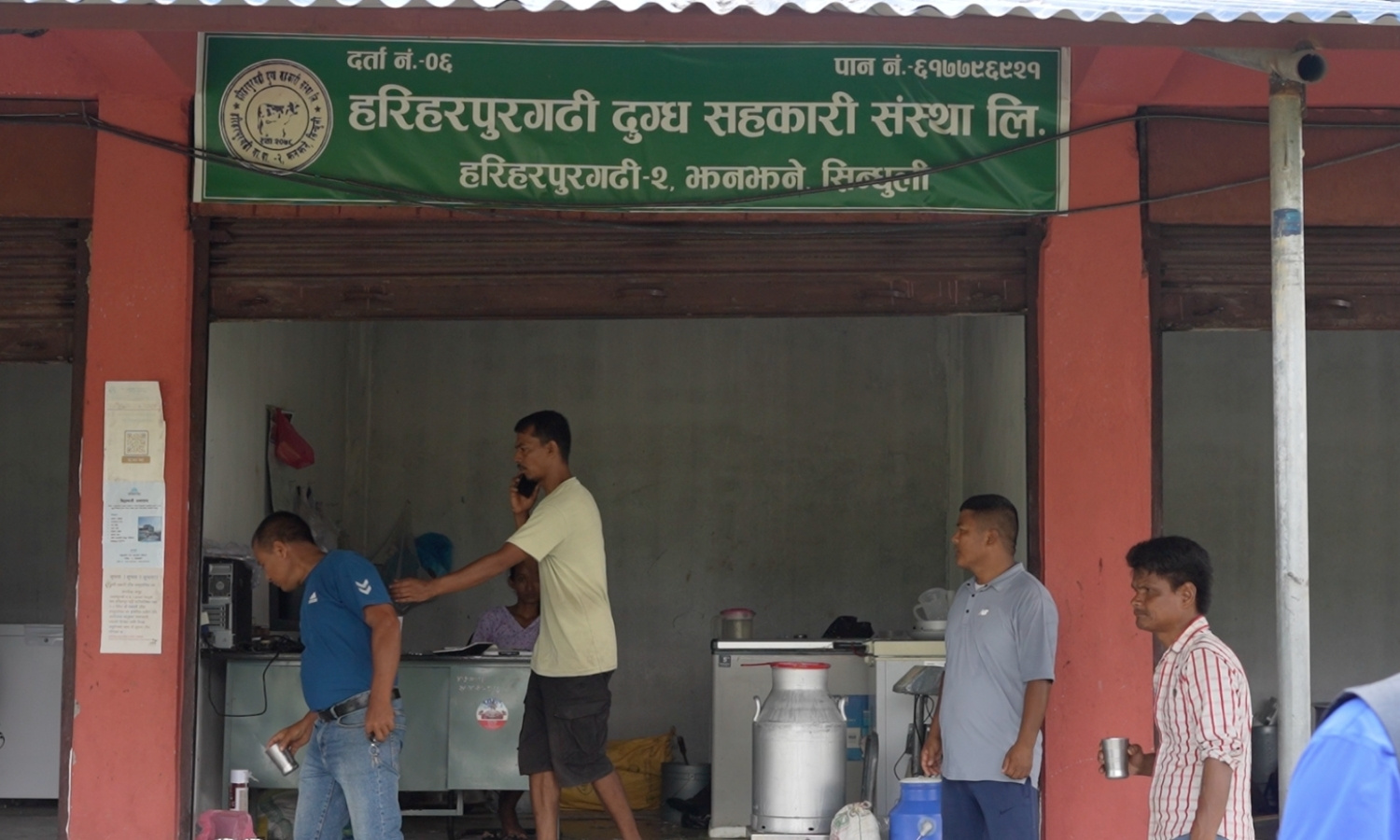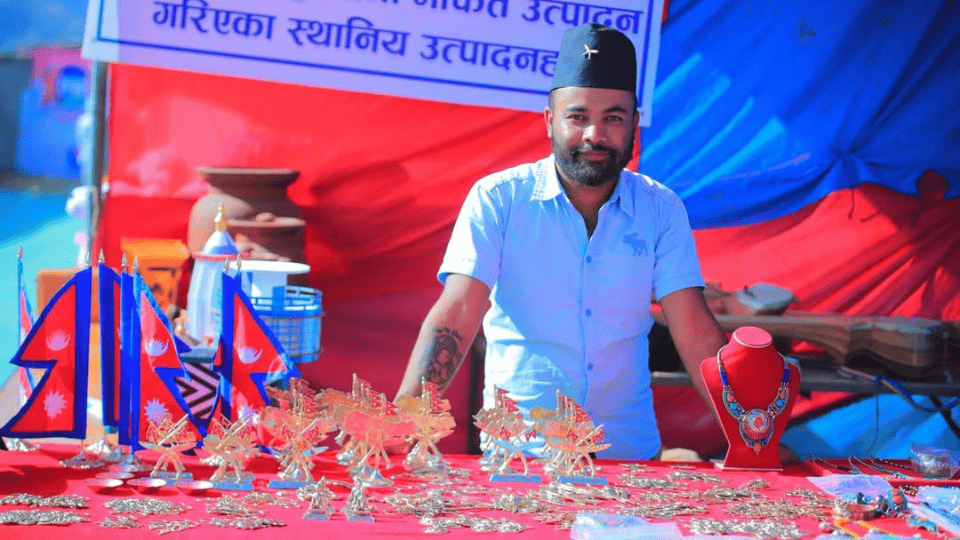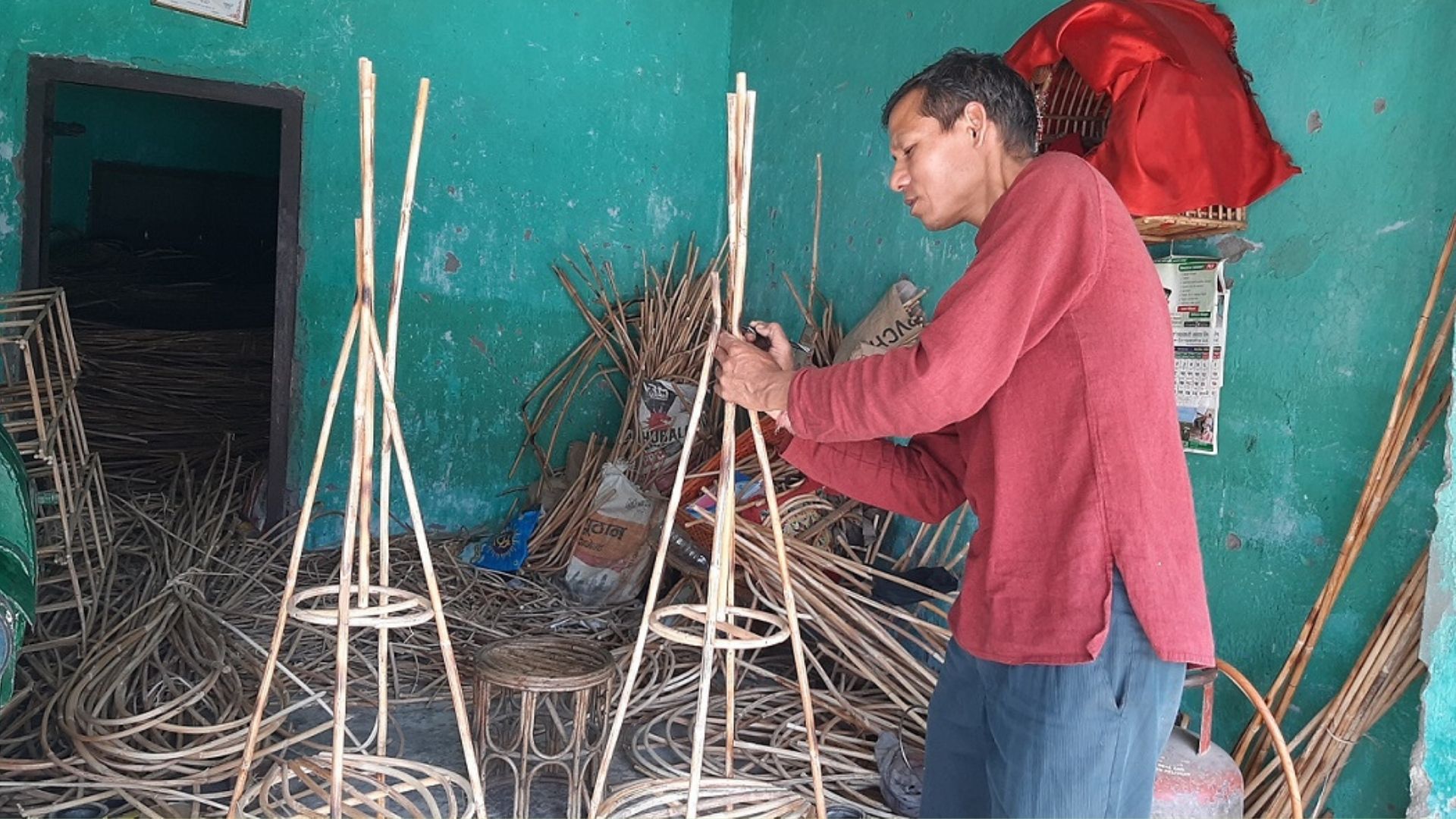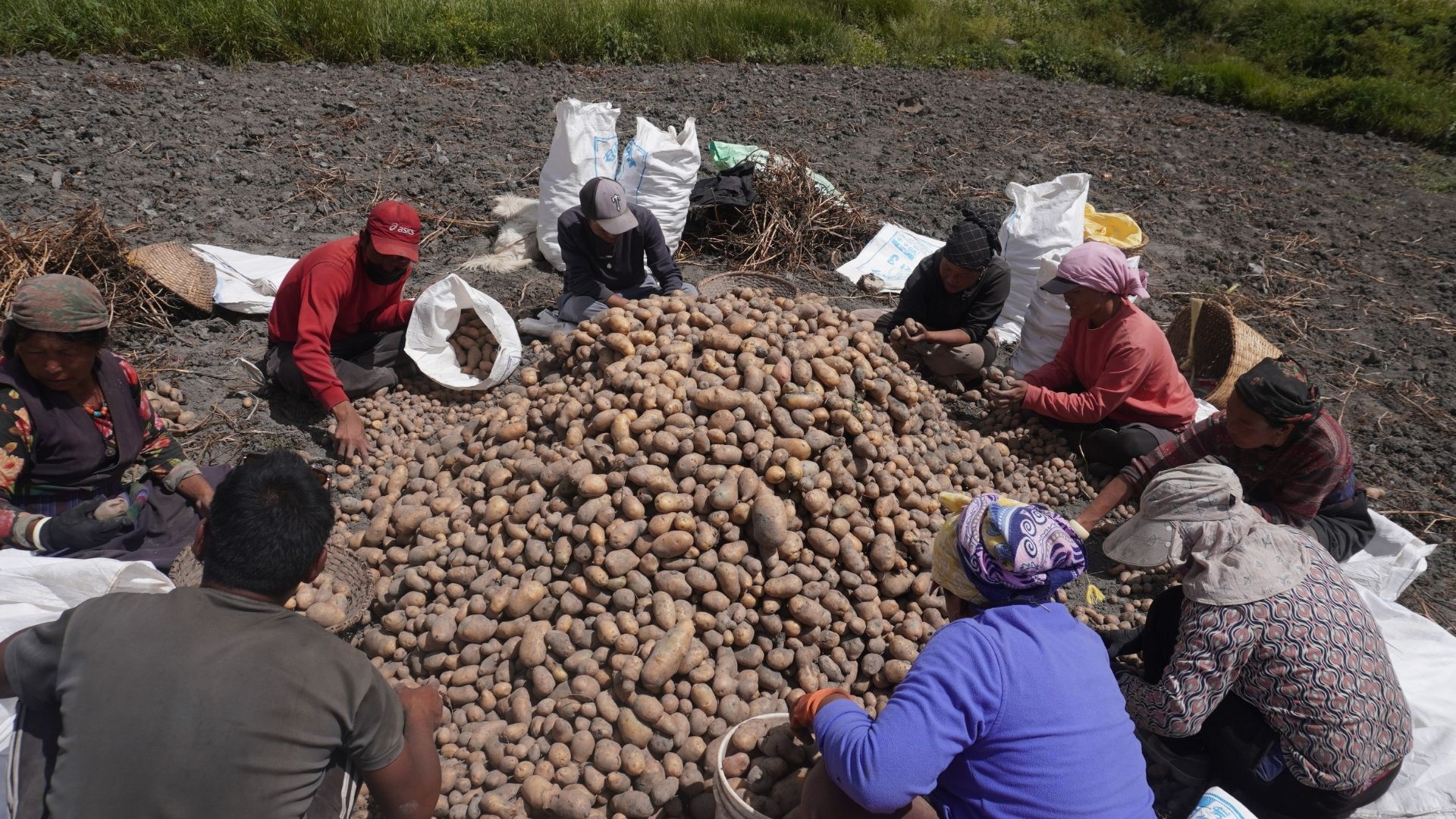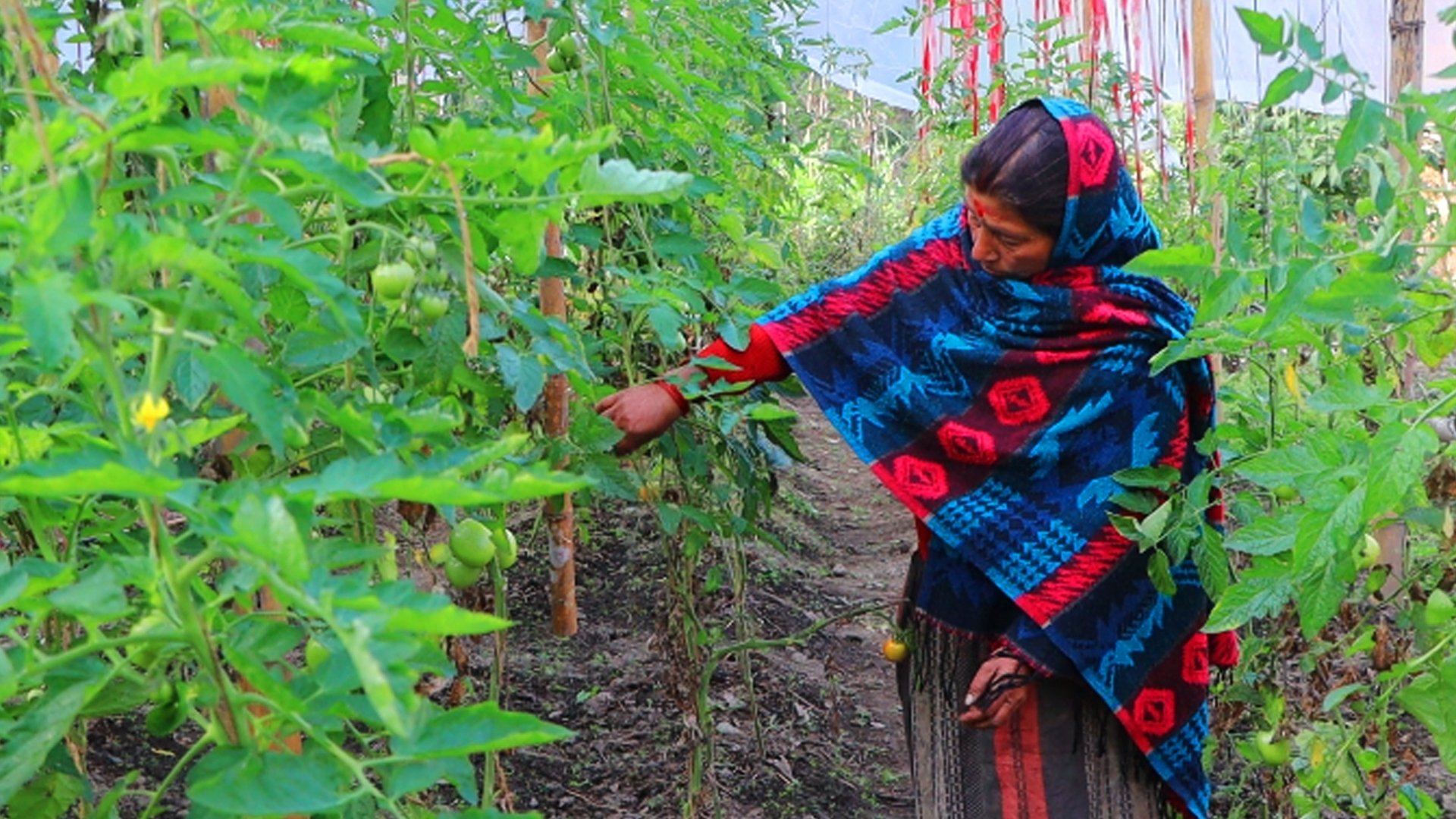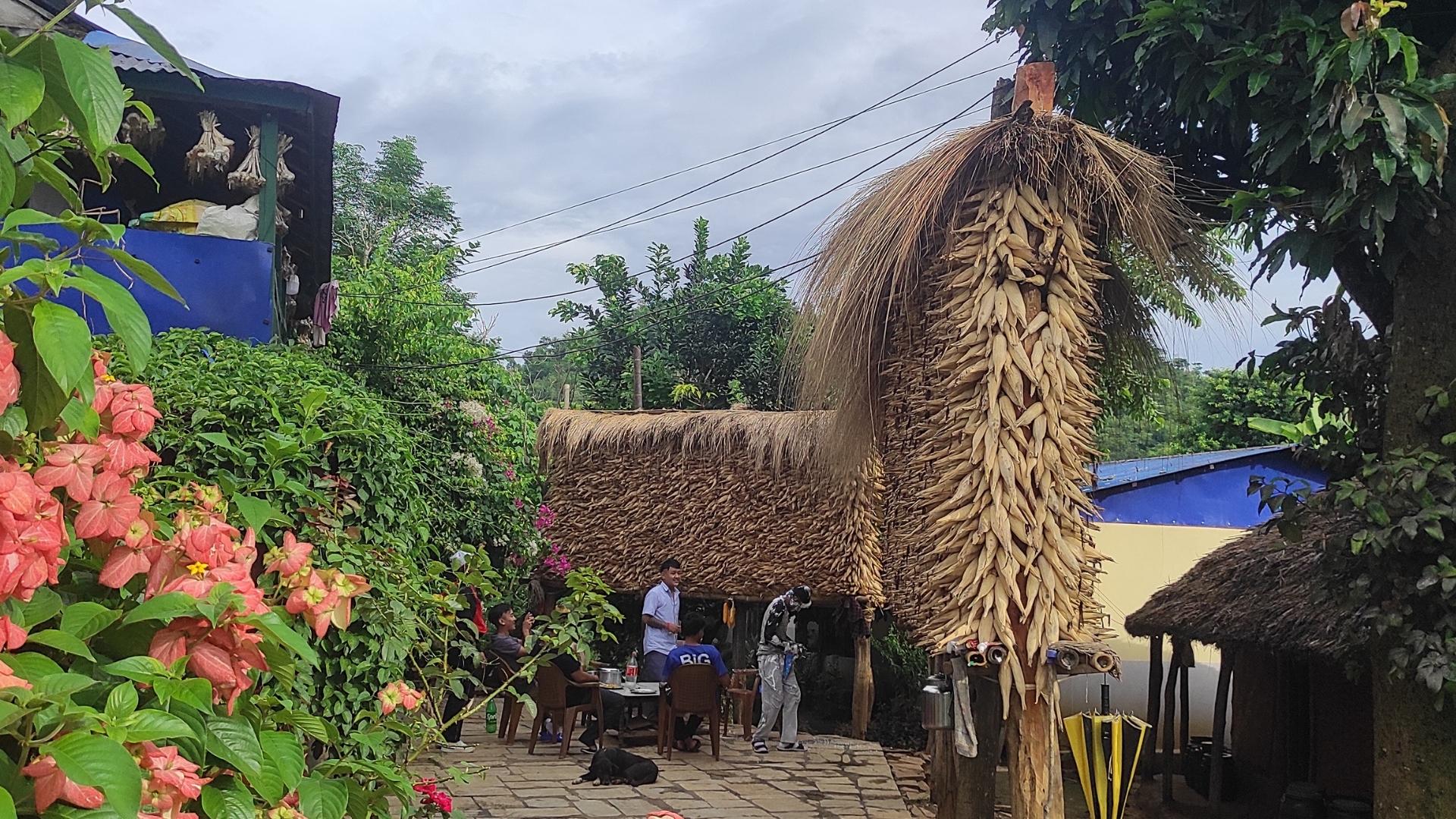Local governments are often referred to as “Singha Durbar in every village” (Singha Durbar being the central administrative complex in Kathmandu). Federalism has ensured that local governments remain the most accessible administrative bodies for the general public. However, the situation is not equally ideal everywhere.
Nevertheless, a single step taken by Hariharpurgadhi Rural Municipality has brought about a significant change in the lives of many farmers there.
Located in Jhanzhane, where the rural municipality’s office stands, the daily morning scenes have changed in recent years. Adjacent to the office lies the Hariharpurgadhi Dairy Cooperative’s milk collection and processing center. Every morning, farmers bring milk here. During the day, locals gather to drink buttermilk and purchase yogurt to take home. In front of the municipal office, on the grassy fields, buffaloes and other livestock graze peacefully.
This wasn’t the case before 2021. The area, primarily inhabited by Rai, Tamang, and other indigenous groups, had no milk production. Only a few practiced animal husbandry, mainly for meat consumption.

“People used to wander around drunk after consuming homemade liquor,” says Santali Rai, Chairperson of the Hariharpurgadhi Dairy Cooperative. “Now, those same people come to enjoy yogurt and buttermilk. When guests arrive at homes, they’re now welcomed with yogurt, milk, and paneer.”
This transformation has been made possible primarily by the Hariharpurgadhi Dairy Cooperative — which was established with critical support from the rural municipality’s grant.
In 2021, the municipality set aside NPR 6 million for an innovative program. According to Santali, this amount was distributed to 120 farmers, each receiving NPR 50,000 to purchase buffaloes. Under this program, the dairy cooperative was established. Though formed under the cooperative model, its core mission was to ensure local milk consumption and make farmers self-sufficient.
According to Chairperson Rai, the initiative has yielded successful results so far.
Sufficient production for both consumption and sales
In Ward No. 2 of Hariharpurgadhi Rural Municipality, Santali Rai’s family was among the few traditionally raising buffaloes and producing milk.
“We’ve focused on livestock farming since my grandfather’s time. People used to come to my house to buy milk,” says Rai.
Back then, milk consumption was occasional. According to Rai, milk demand was low, and animal husbandry was uncommon. But after the municipal program was implemented, things changed.
In 2021, the cooperative was officially registered and launched. The government-funded program targeted farmers’ livelihood enhancement. While each farmer received NPR 50,000, most contributed additional funds themselves to start buffalo farming. Since then, milk production has significantly increased.
“Earlier, milk production here was unheard of,” Rai remarks. “Now, we produce up to 500 liters daily.”
Currently, due to buffalo fatigue, daily milk collection averages around 250 liters, he adds.

The government grant has not only boosted milk production in the municipality but also brought notable lifestyle changes among locals. Rai observes that while traditional rituals previously involved alcohol consumption, people now also use yogurt and buttermilk. For instance, the Rai and Tamang communities, who earlier only offered meat during religious rituals, now sometimes use dairy products too — especially in weddings and naming ceremonies.
“The drinking culture hasn’t disappeared, but milk production has increased local consumption. People here now consume not only milk but also yogurt, buttermilk, and ghee. Farmers have also gained a new source of income,” he says.
Since the municipality now produces more milk than it consumes, the cooperative has started selling milk outside the area. It also processes milk into various dairy products. The cooperative produces yogurt, buttermilk, ghee, paneer, condensed milk (khuwa), and lassi. Products not consumed locally are sold to Koshi Dairy in Sindhuli and Mangal Dairy in Sarlahi.
A source of income for farmers
Since the dairy cooperative began operations, farmers now regularly receive monthly income. Being a livestock farmer himself, Rai says the cooperative has helped him earn a lump sum monthly.
“Previously, when we sold milk informally, the money would just disappear,” he says. “Now, I receive around NPR 30,000 to 35,000 monthly. Even farmers with just one or two animals earn decent incomes. Those raising buffaloes and selling milk are happy.”
Rai adds that milk is now available in every household, and people are earning income as well. After covering farmer payouts and other expenses, the cooperative still collects around NPR 150,000 per month from milk sales, which is used for future farmer payments.

Despite being a cooperative, the membership remains limited to the 120 farmers who received the original grant, Rai explains. While others can join, no such initiative has been taken yet. The goal was always to bring about change in farmers’ lives, which he believes has now materialized.
“I’m happy to see this transformation,” he says. “Farmers have more energy and optimism now. Those raising buffaloes and selling milk are enjoying themselves. There’s income at home, milk for the family, and even manure for the fields.”
Boost in farmers confidence
The dairy cooperative has a committee of 11 members and 120 general members. It has also hired employees to handle tasks like milk collection and processing.
Rai says there were initially three employees, but now only two remain, who manage milk collection, processing, and operation of the cooperative’s chilling center.
Besides the employees, committee members including Rai and other stakeholders spend their days near the processing center. Daily crowds gather to consume buttermilk.
According to Rai, the cooperative, which began with municipal grants, has not only transformed farmers’ lives but also changed local habits. Additionally, it has created opportunities for skills development. The cooperative has a chilling vat, fridge, and cooling center for milk collection and storage. With municipal support, farmers have learned how to use these tools and even produce paneer and khuwa.
“We haven’t limited our production to local consumption — we’ve been able to sell in different places,” Rai says. “Right now, we have a large stockpile of khuwa, which we’re now selling as ‘chocolate’. That makes me happy. Many think agriculture and livestock farming lead nowhere, but this initiative from the municipality has given energy to farmers. It has boosted their confidence.”

